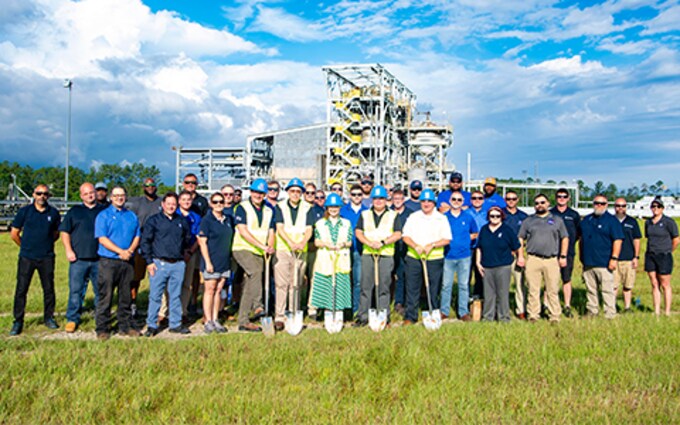Rolls-Royce has announced the groundbreaking of an outdoor, full-scale gas turbine hydrogen testing site at NASA’s Stennis Space Center in Mississippi. Partnering with easyJet, this marks Rolls-Royce’s third test stand at the facility.
Rolls-Royce’s hydrogen testing program is designed to demonstrate the integration of 100% hydrogen fuel operation on a modified Pearl 15 engine. This collaboration includes engineering expertise from Tata Consultancy Services (TCS) and builds on decades of partnership with NASA. The program is part of Rolls-Royce’s broader goal to meet the growing demand for power while targeting net-zero emissions by 2050.
While Rolls-Royce’s hydrogen initiative is commendable, it’s essential to compare it with similar projects within the industry. For instance, Airbus is also heavily investing in hydrogen technologies, aiming to introduce a zero-emission commercial aircraft by 2035. Airbus’s efforts include multiple hydrogen demonstrator projects, such as the ZEROe concept, which explores hydrogen propulsion in various aircraft configurations. Evaluating Rolls-Royce’s progress against such industry benchmarks provides a clearer picture of its competitive positioning and technological advancements.
Rolls-Royce’s Approach
Rolls-Royce’s testing at NASA Stennis is part of a comprehensive global program to validate hydrogen’s viability in aerospace applications. The company’s previous successes include running the AE2100 engine on 100% green hydrogen and testing a full annular combustor on a Pearl engine, demonstrating hydrogen combustion at maximum take-off thrust conditions. However, these achievements must be viewed in the context of scalability and practical implementation in commercial aviation.
The economic impact of transitioning to hydrogen fuel is significant. While the long-term benefits include reduced emissions and potential cost savings from renewable energy integration, the upfront investment in infrastructure and technology development is substantial. Rolls-Royce, supported by various international research programs such as the UK’s Aerospace Technology Institute HyEST and the European Union’s Clean Aviation CAVENDISH, is positioning itself to capitalize on this transition. However, the economic feasibility of widespread hydrogen adoption in aviation remains a critical question.
Hydrogen is not the only path to decarbonizing aviation. Sustainable Aviation Fuels (SAF) offer an immediate, albeit partial, solution by reducing lifecycle emissions and utilizing existing infrastructure. Rolls-Royce’s technology strategy also includes promoting SAF, highlighting a multi-faceted approach to sustainability. Comparing the readiness and impact of hydrogen versus SAF provides a balanced view of future aviation fuel strategies.





